Near the center of town lies the Chau Doc Market, an easily navigable, great place to get lost for an hour or two.
Colorful with fruits and vegetables and busy with food vendors, the Chau Doc Market represents a slice of life in the Mekong Delta. Blessed with kilometers of waterways and situated by the “Three Rivers Crossing”, including the Hau River, a tributary of the mighty Mekong, the market reflects the dependence of the people on what the river and land provide.
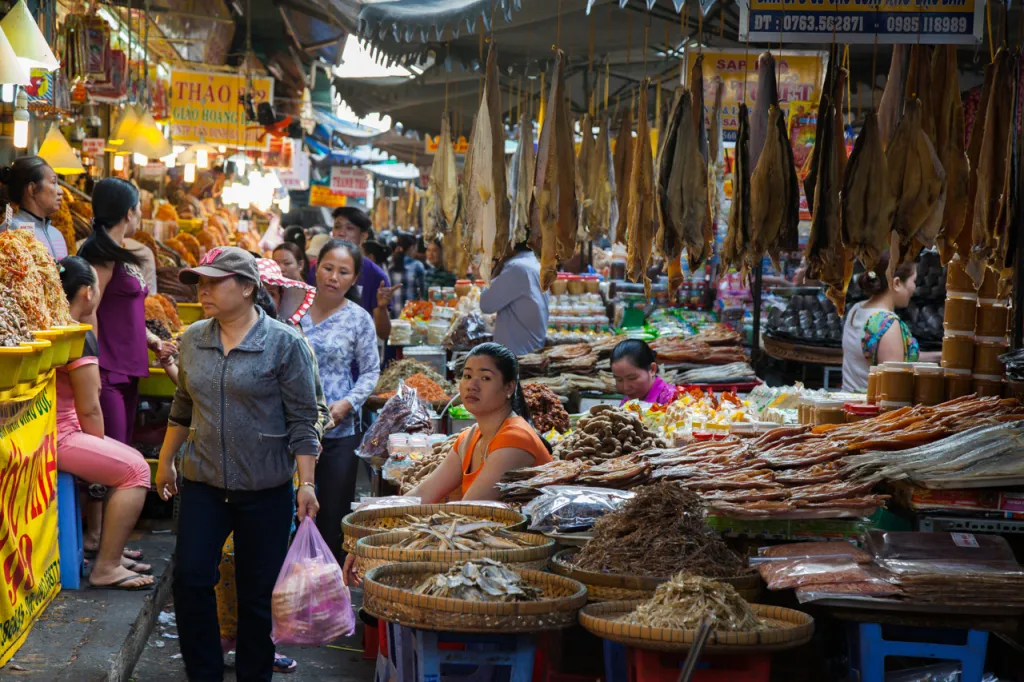
While Vietnamese do eat fresh fish, preserved fish is a popular alternative as it doesn’t need refrigeration and can be stored for a length of time, making it convenient to always have on hand or to give as gifts. Dried fish can be used to flavor soup stocks, grilled and eaten with rice for a quick meal, or soaked in water and used as fresh fish.
*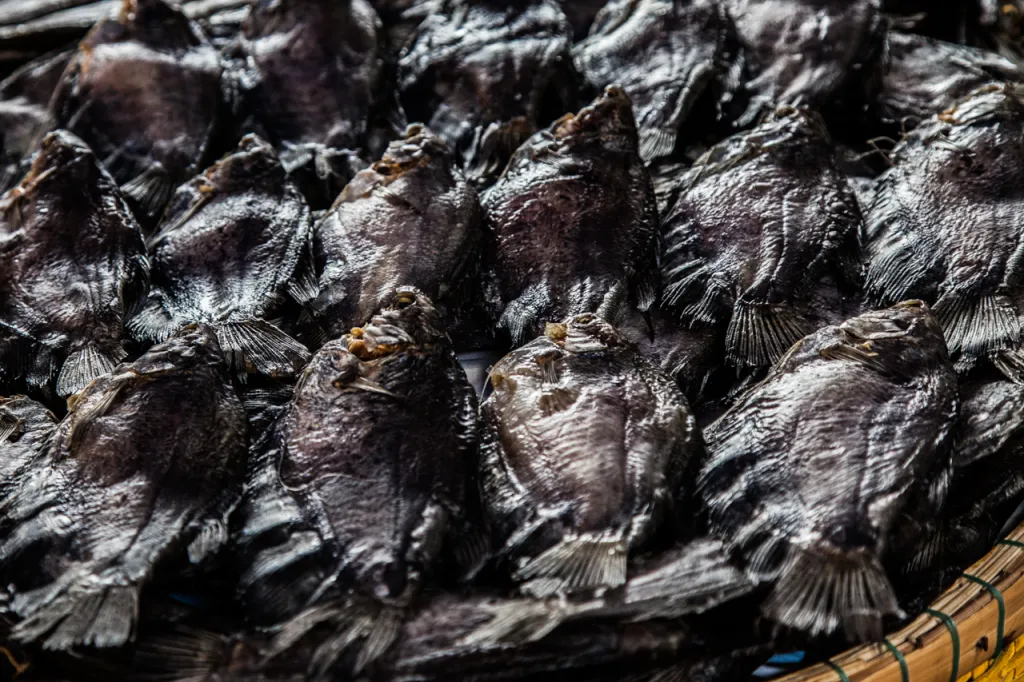
Chau Doc, though, is known across Vietnam as the “Kingdom of Pickled Fish”. A stroll through the market reveals more than 30 types of local freshwater fish, piled into neat mountains. Newbies beware, though — the “pungent” smell isn’t for the faint of heart.
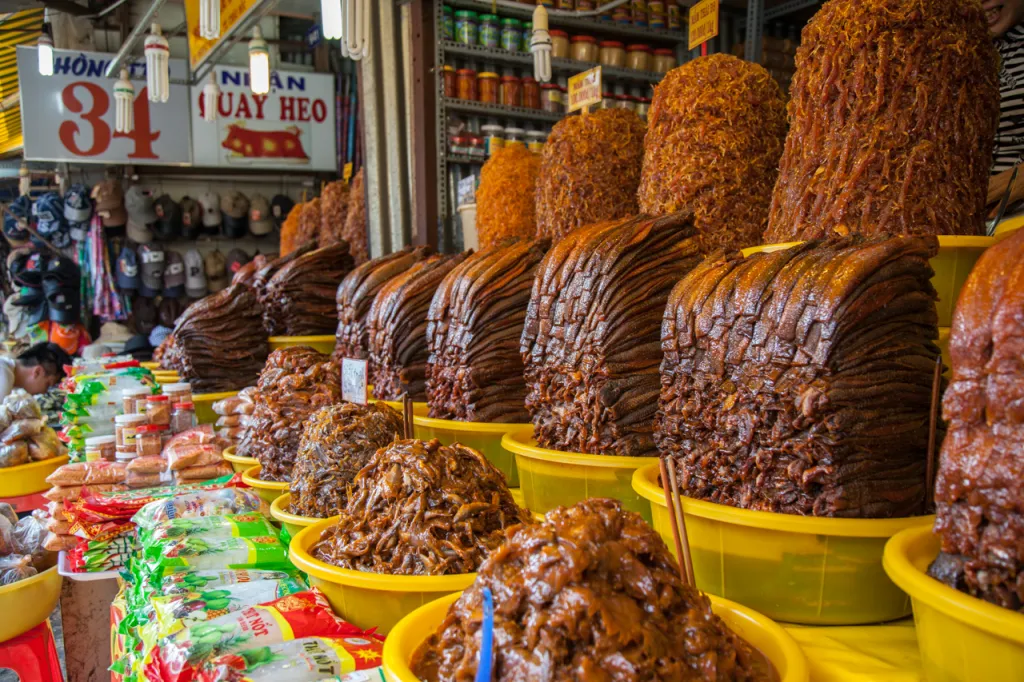
Pickled fish, called m?m in Vietnamese, is usually de-boned fish, preserved with salt, palm sugar, chili, garlic and sometimes powdered roasted grains of rice. Some varieties also include shredded, pickled green papaya. The Vietnamese use pickled fish to as the base for hot pots or as a salty dip, eaten with boiled pork and fresh local herbs and vegetables.
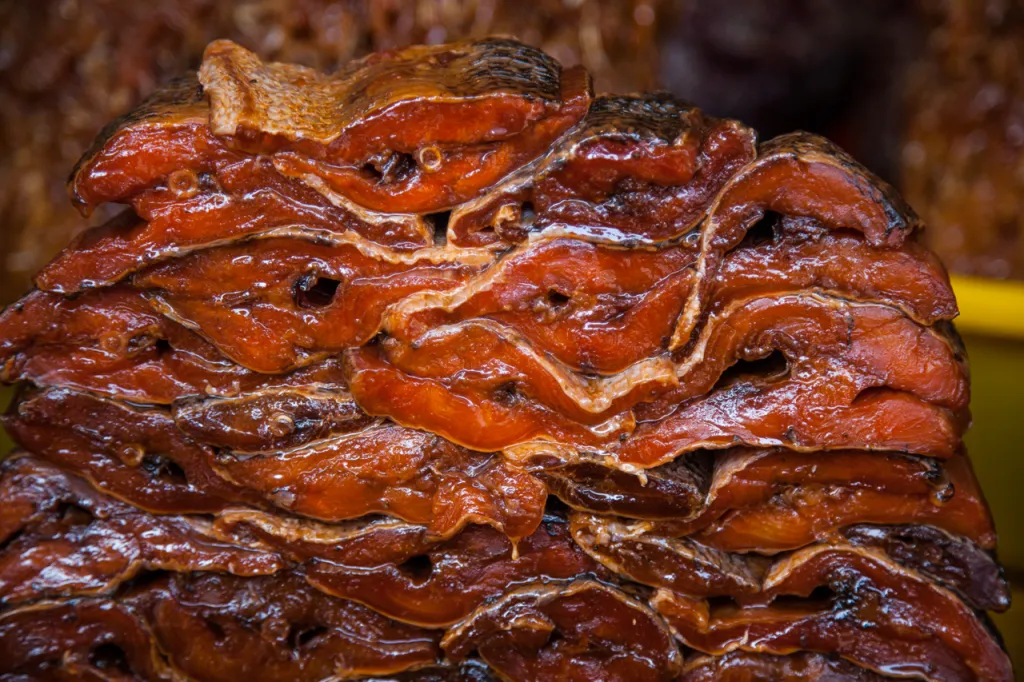
It’s not just fish that can be pickled, though. Prawns and even freshwater crabs are popular…
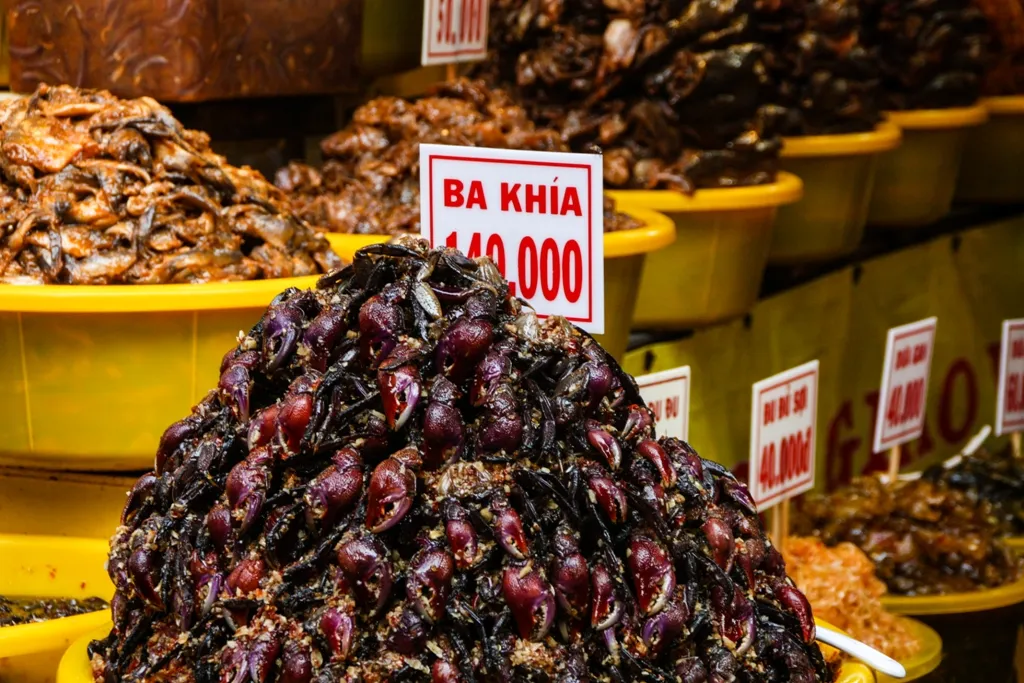
… as are pickled vegetables: lotus roots, pearl onions, garlic, baby eggplant, young bamboo, cabbage and cucumbers.
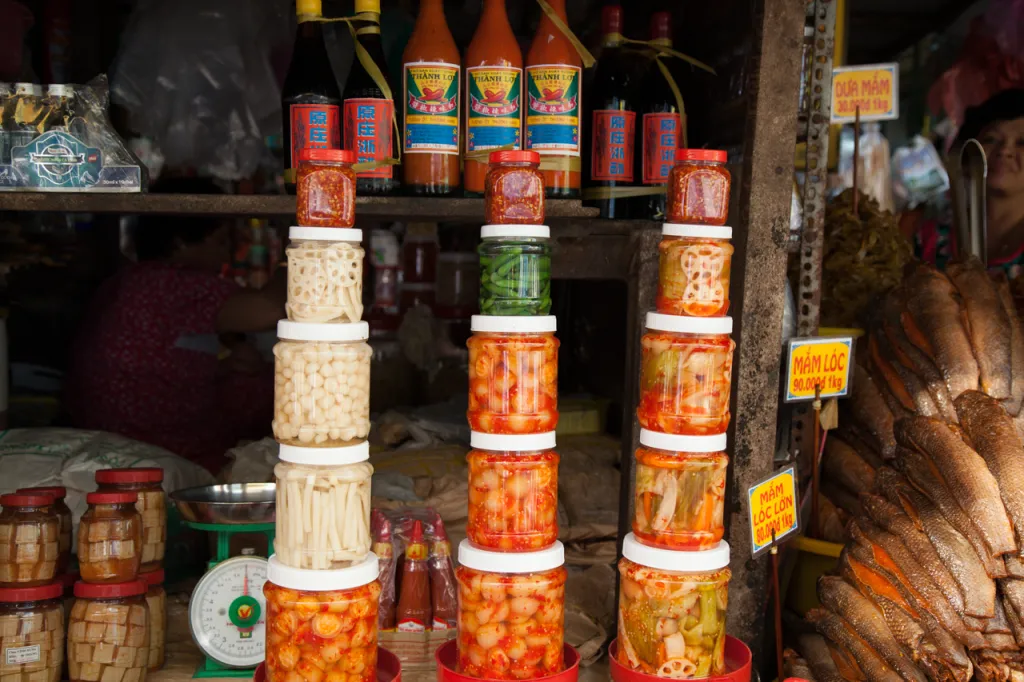
Leaving the fish section, we come to the fresh fruits and vegetables, a raucous array of colors and textures.
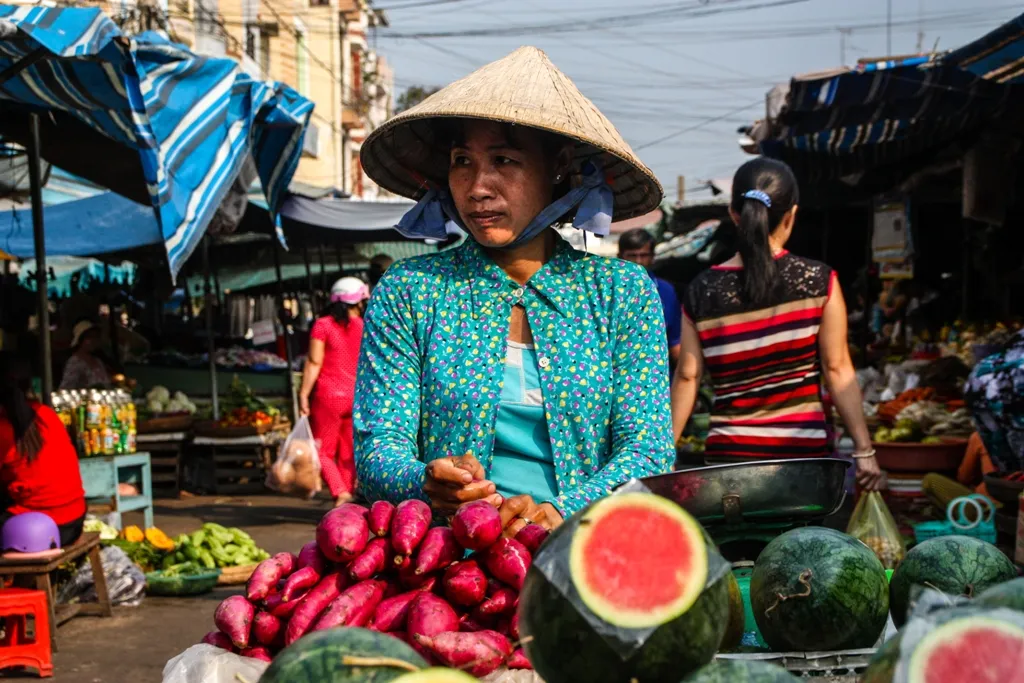
Here, too, you’ll find wonderfully unique products that only grow in the region, like the pretty dien dien flowers that grow near the water and which can be soaked in a vinegar solution for a quick pickle or eaten raw with the pickled fish or thrown into a stirfry or soup.
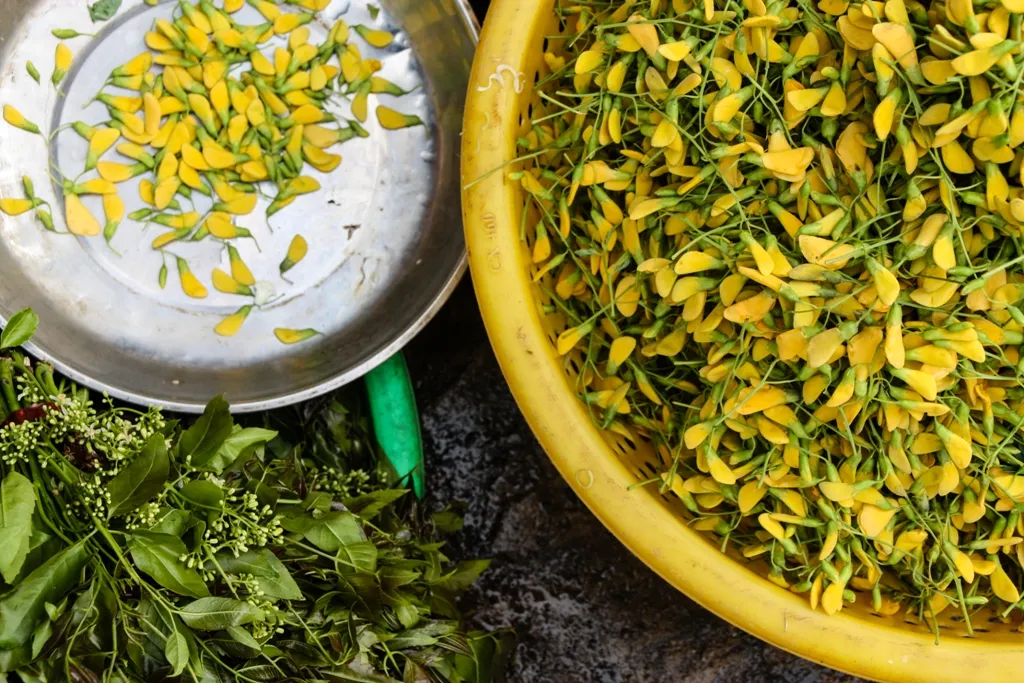
Vietnamese cuisine is a delicious mix of flavors: sweet, salty, sour, spicy. One of nature’s sweet / sour ingredients comes in the form of tamarind, sold in heaps at the Chau Doc Market.
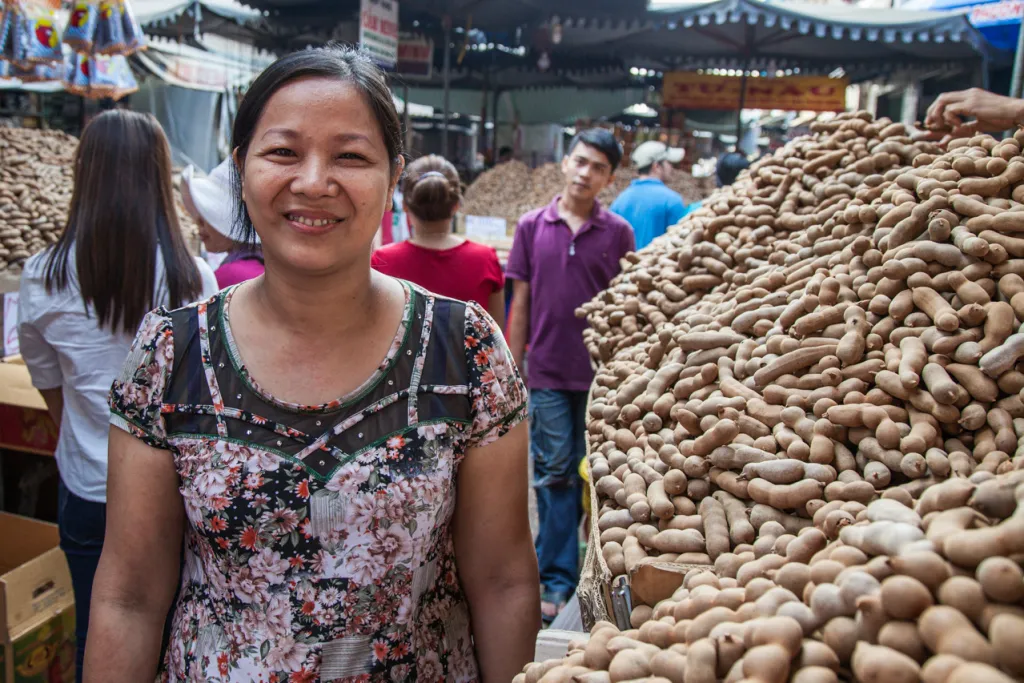
This fruit with a sticky, brownish flesh can be eaten as is as a snack, or can be found in the ubiquitous sweet and sour Vietnamese soup (canh chua) and used in sauces.
Throughout the market, food vendors have tasty snacks and meals at the ready, be it a bubbling pot of bún riêu, a flavorsome broth of pork bones, freshwater crab meat bound with egg and eaten with vermicelli noodles…
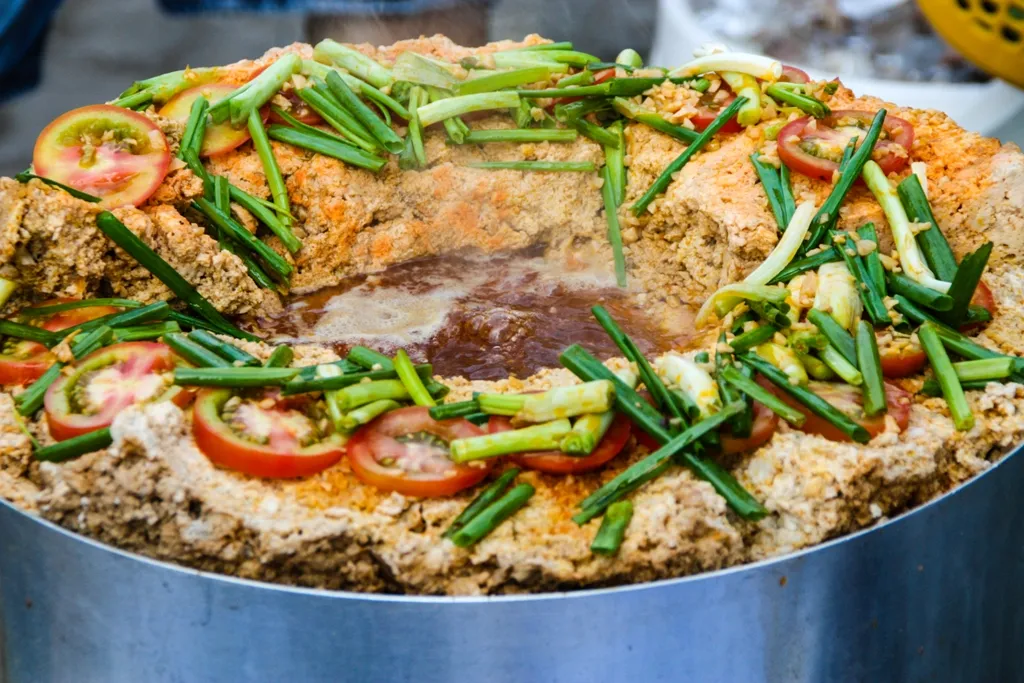
or a quick snack of fried dough, delicious in any language.
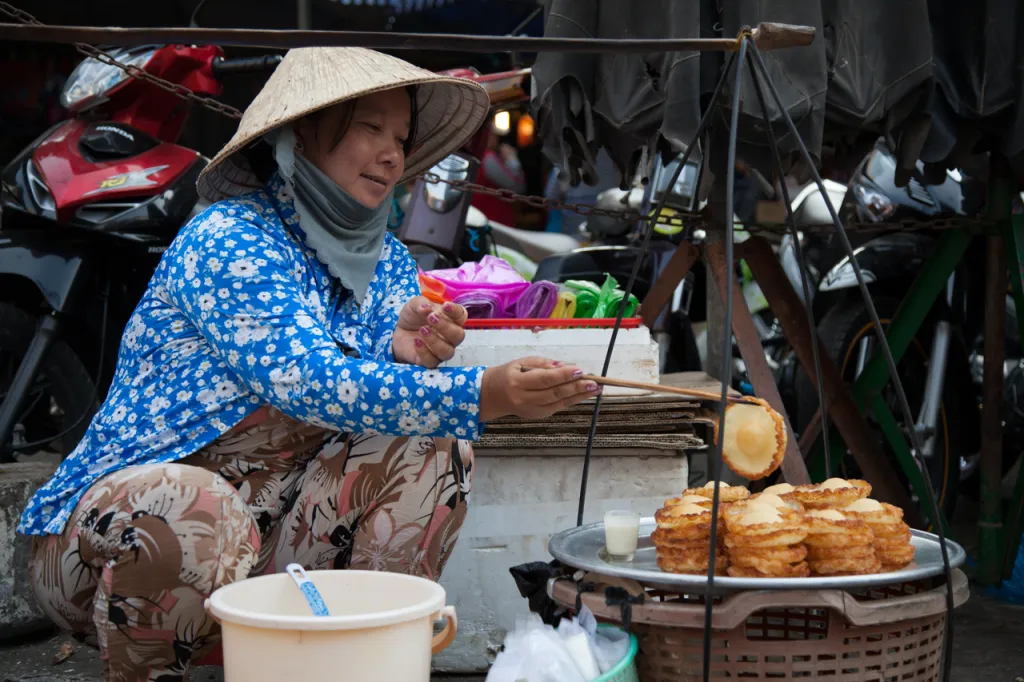
Sometimes the best part of a trip to the market is just to get lost in the bustle, find a quiet corner away from the foot traffic and simply people watch, taking in the cheeky banter between the sellers and soaking up the hectic atmosphere of the market with a cold drink of fresh sugar palm juice in hand…
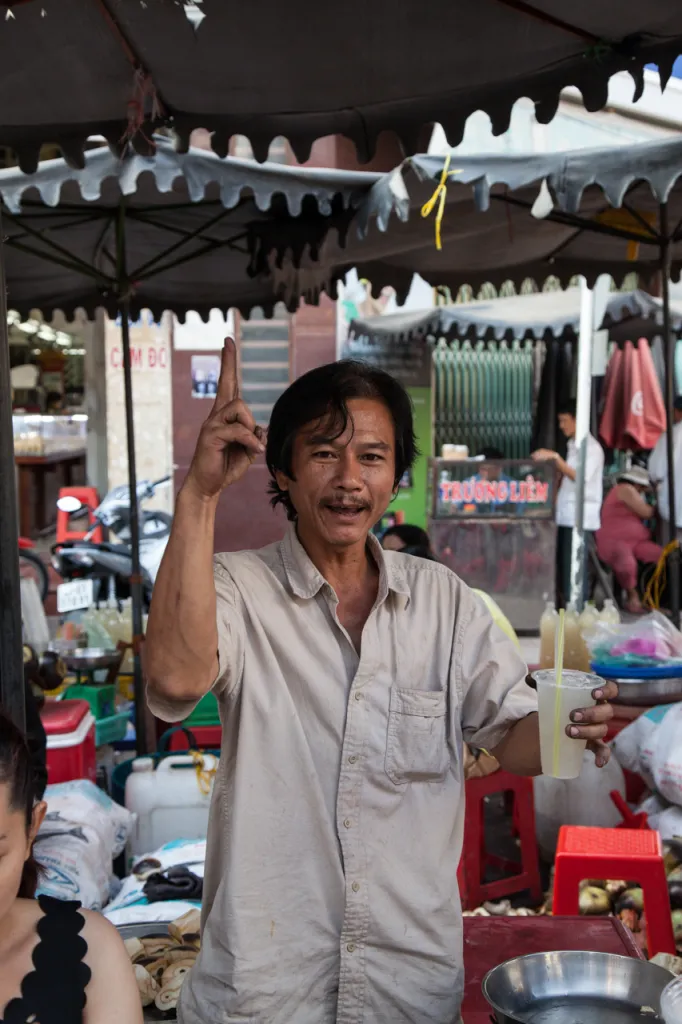
Photography tips for the market:
? The Chau Doc Market is mainly covered (there’s an indoor section as well) and the outside stalls have tarps overhead, so it’s not imperative to get there at a certain hour for lighting purposes. That said, the market is usually busiest in the early mornings and slows down considerably as noon approaches.
? When taking photos of people, be aware that some vendors are very superstitious and do not like having their photo taken first thing in the morning. Some believe that if their photo or a photo of their products is taken before they’ve made a sale, it’ll be a bad omen for the rest of the day. The market is a place of business, so remember to not block traffic as you take photos.
? Try also taking some longer-range, candid photos where the subject may not even be aware you’re taking their photo. This is a great way to capture the interaction between the people in the market as it happens.
? Think about perspective and adjusting your height. Things that are symmetrical or geometric often look nicer when captured from above…
? And as many of the vendors sit on low stools, try crouching down to their eye-level for a more interesting angle.
If you go: The Chau Doc Market is located right near the center of town and is easily walkable on your own. However, very few people will be able to speak anything other than Vietnamese. Also, to learn more about the unique Mekong Delta products and how they’re used in Vietnamese cuisine, try a cooking class that includes a trip to the market.
Executive Chef Vu Dinh Phuong from the Victoria Chau Doc Hotel leads cooking classes and market tours. Enquire at the tour desk at Victoria Chau Doc or email: [email protected]










